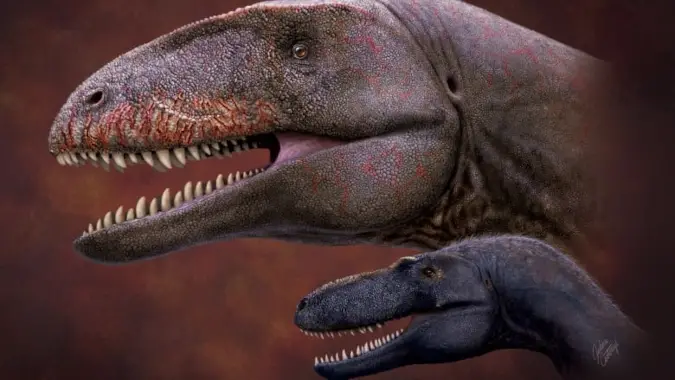Ulughbegsaurus Uzbekistanensis
The Queue: Ulughbegsaurus uzbekistanensis
You may remember when I wrote about Acrocanthosaurus a few weeks back, I talked about how it lived way before Tyrannosaurus Rex and if it had met one of the much smaller members of the Tyrannosauridae that had lived at that time, it wouldn’t have had much difficulty at all dispatching them? Well, meet Ulughbegsaurus uzbekistanensis, a smaller cousin of Acrocanthosaurus and other members of the Carcharodontosauridae such as Giganotosaurus or Carcharodontosaurus itself.
While I say smaller cousin, it’s still estimated to have been up to 8 meters (26 feet) long and weighed over a ton, which at that time — sometimes between 92 and 90 million years ago, based on the rocks where these fossils were found — would have potentially made it the largest predatory dinosaur in the area. Tyrannosaurids found in Uzbekistan around 92 million years ago were barely as big as horses, making Ulughbegsaurus uzbekistanensis nearly four times their size. That means it might have pushed the Tyrannosaur radiation into North America and kept them suppressed in Asia, which would explain why we find larger Tyrannosaurs in North America such as Appallachiosaurus at 6 to 7 meters sometime around 77 million years ago in what is now the eastern United States.
It’s hard to say with the relatively limited sample size we currently have, but finding a Carcharodontid in Uzbekistan around 92 million years ago extends the range of the clade significantly further east and later in time than we’d been able to establish before now. It’s worth pointing out that some species of basal Tyrannosauroids like Dilong and Guanlong date back to the late Jurassic or early Cretaceous, significantly before Ulughbegsaurus was alive. So there may have been other Carcharodontid dinosaurs in what is now Europe and Asia keeping them smaller for millions of years.
I’m super excited about this and I can’t wait for more specimens to be discovered so that we can determine what, if any, relationship between the spread of the Allosauroid and Carcharodontid dinosaurs in the Jurassic and early Cretaceous might have had in the spread of the Tyrannnosauroidea from Europe and Asia into North America.





